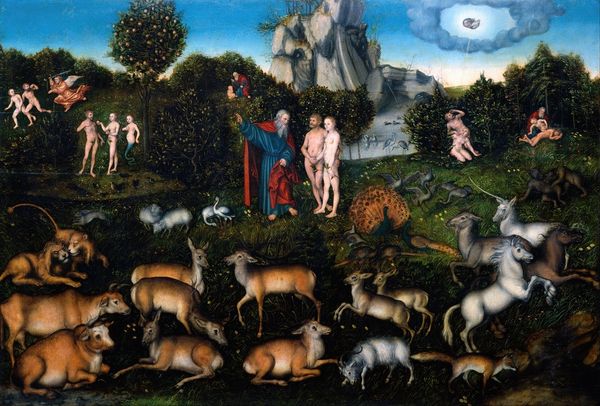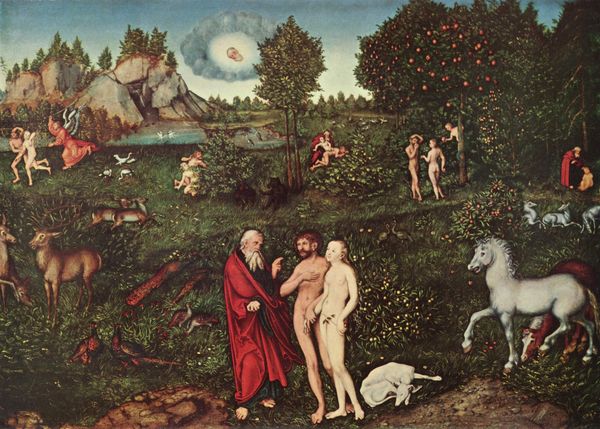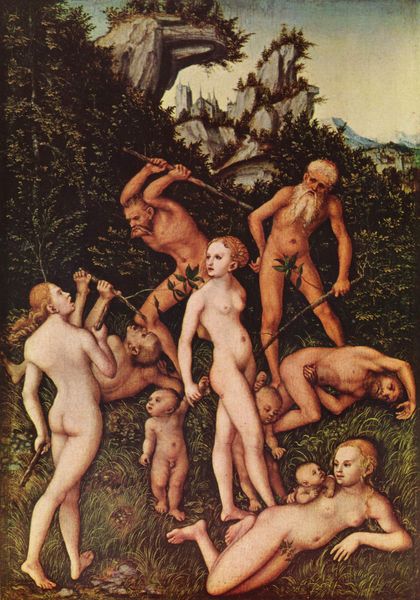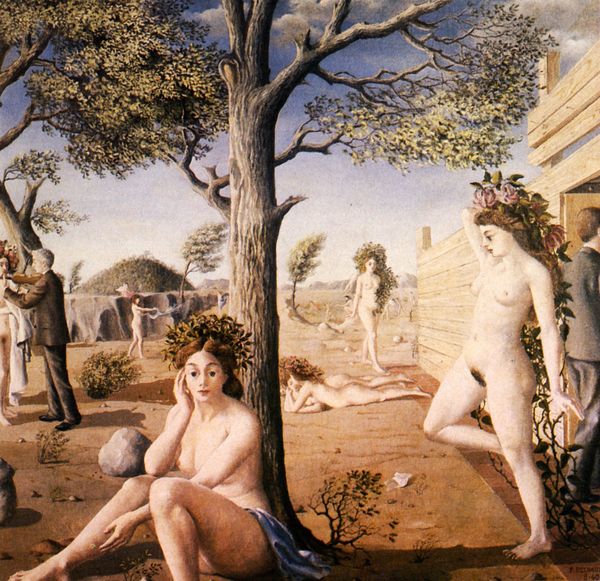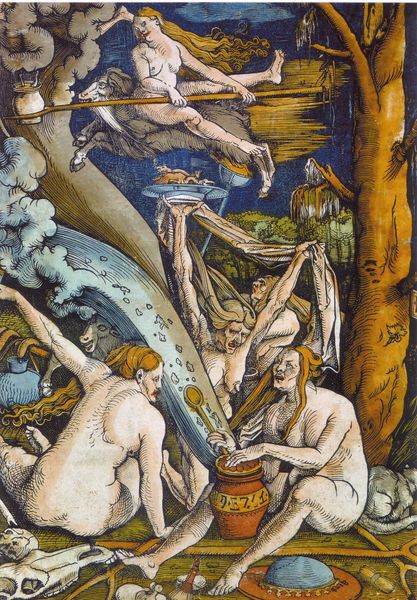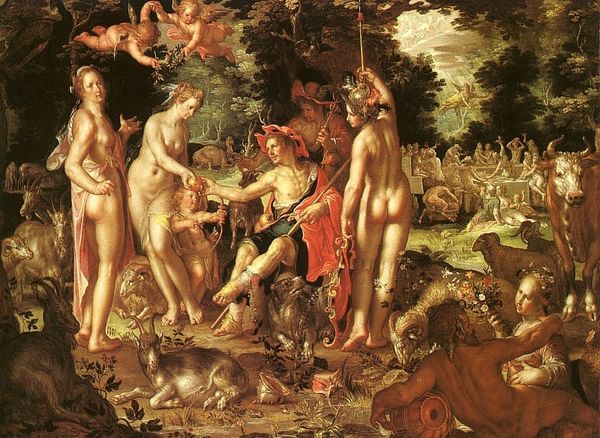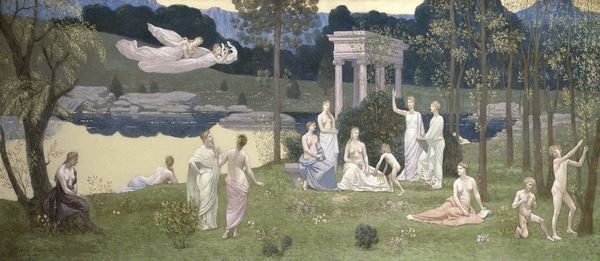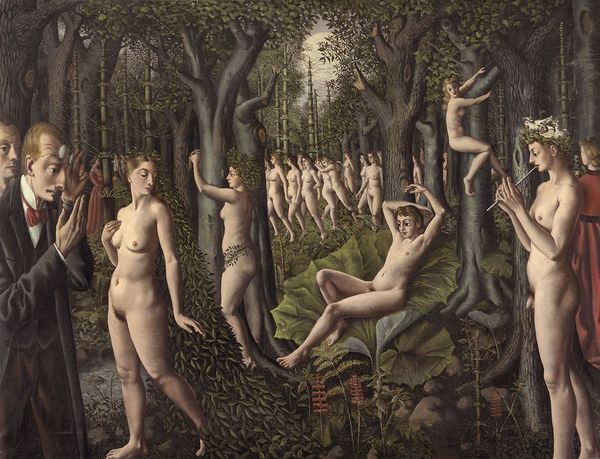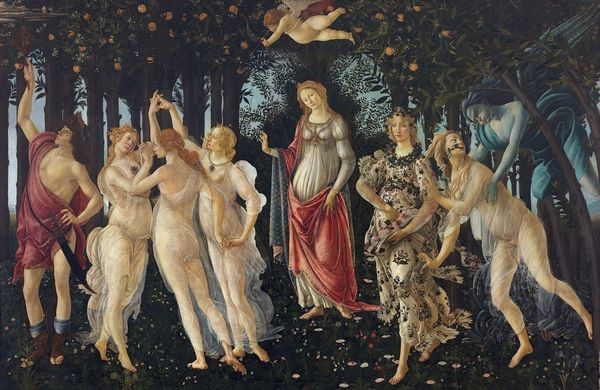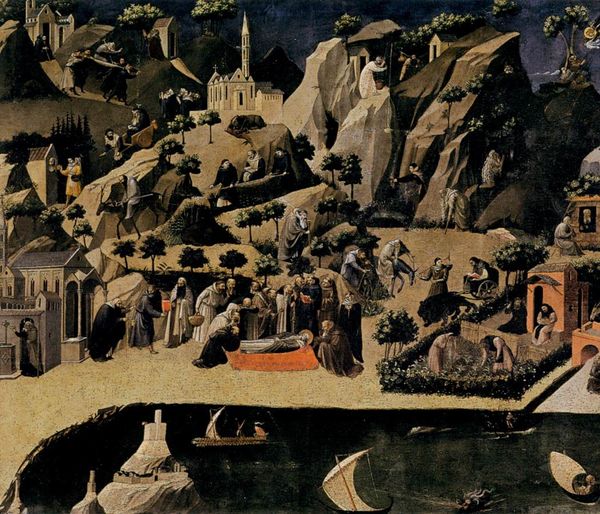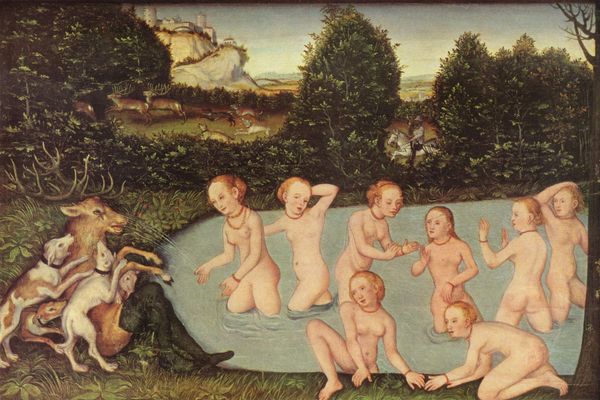
painting, oil-paint
#
allegory
#
fantasy art
#
painting
#
oil-paint
#
landscape
#
figuration
#
11_renaissance
#
roman-mythology
#
mythology
#
genre-painting
#
northern-renaissance
#
nude
Dimensions: 75 x 105 cm
Copyright: Public domain
Curator: Today we are looking at “The Golden Age,” painted in 1530 by Lucas Cranach the Elder, held at the National Gallery in Oslo. Editor: My initial response is one of...discomfort. The composition feels crowded, and the figures, while idealized, possess an almost unsettling stillness. The high-key palette also accentuates the overall tension of the scene. Curator: Tension, yes, and also consider the period it was made in: the dawn of the Reformation and the shift in social and political structures that affected art production, influencing Cranach to create art that would communicate allegorical meaning during shifting sociopolitical ideas. Editor: The composition feels segmented into zones. In one part a group of figures is bathing in water while to another side we can see couples engaged in gentle caresses and affection. Another group, holding hands, moves into a dance that creates almost a chromatic line. The work also has some beautiful touches: light refracted in the stream is meticulously studied; observe how all colors and gestures are balanced as part of the composition Curator: The balance comes from its material circumstances, too. It's not merely aesthetics—it’s a product of patronage, workshops, and the cultural consumption of its time, which dictated that these "genre paintings," although depicting nudes, would be received within defined socio-economic strata as palatable moral tales. It served specific class and gender roles. Editor: Even so, its use of figures and idealized settings has symbolic richness. Cranach clearly sought to use form to project not just ideas about humanity’s distant past but, also a semiotic of peace that goes hand-in-hand with human nature Curator: Exactly! But we must situate it historically; otherwise, we risk interpreting through modern assumptions. It is a historical object which bears marks of its manufacture as much as any attempt at "peace." What kind of oil pigments were available? Who commissioned the piece, and how did that influence the final output? Editor: Alright, fair enough, and thanks, you've pushed me to reconsider this at deeper symbolic levels, understanding how art serves as the window into a wider range of cultural considerations that frame how this art piece communicates.
Comments
No comments
Be the first to comment and join the conversation on the ultimate creative platform.

